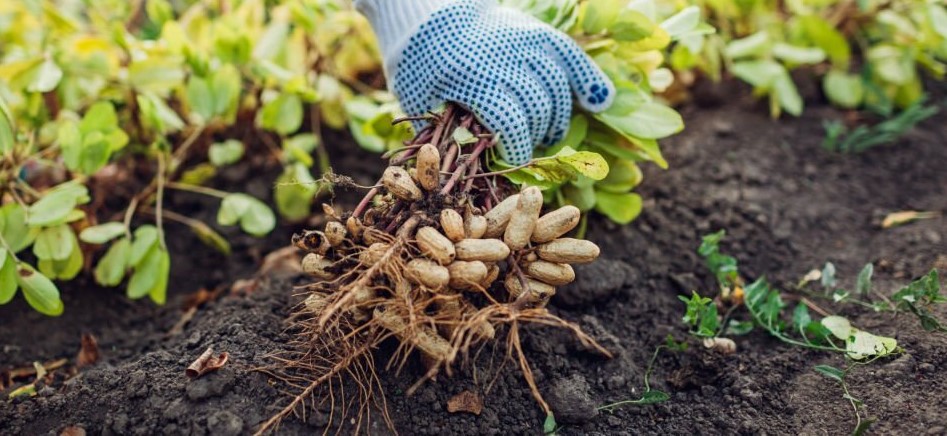If you’ve ever wondered about the intricate details of a peanut plant’s appearance, you’re not alone. Understanding the physical characteristics of this fascinating legume plant is essential for farmers, botany enthusiasts, or anyone simply intrigued by the world of agriculture.

What Does a Peanut Plant Look Like?
In a Nutshell:
To demystify the appearance of a peanut plant, let’s start with the basics. The peanut plant (Arachis hypogaea) undergoes several growth stages, progressing from a seed to a mature plant with distinct features.

Seed Stage:
The journey begins with a peanut seed, known as a kernel, which is typically planted underground. This is a unique aspect of peanut plants – they flower above ground but fruit below. The seed germinates, sending shoots called hypocotyls upward to breach the soil’s surface.
Seedling Stage:
As the seedling emerges, you’ll observe leaves that appear opposite each other on the stem. These leaves are pinnately compound, meaning they consist of several pairs of leaflets arranged on either side of the central axis. During this stage, the plant is establishing its root system and preparing for the forthcoming growth.
Flowering Stage:
Peanut plants are known for their distinctive yellow flowers. These flowers develop at the tips of the main stem and branches. Interestingly, after pollination, the developing ovary elongates and buries itself in the ground. This unique process results in the formation of a structure called a peg, which eventually matures into an underground peanut.
Mature Plant:
A mature peanut plant is characterized by its bushy appearance, with numerous branches extending from the central stem. The compound leaves provide a lush, green backdrop for the developing peanuts. The plant’s height varies, but it generally ranges from one to two feet, creating a compact and vibrant presence.

The Remarkable Adaptations of Peanut Plants
Peanut plants have evolved unique features that contribute to their resilience and successful cultivation:
Geocarpy:
The geocarpic nature of peanut plants, where the fruiting structures develop underground, serves as a protective mechanism. This adaptation shields the developing peanuts from external elements and potential predators.
Nitrogen Fixation:
Peanut plants engage in a symbiotic relationship with specific bacteria called rhizobia. These bacteria reside in nodules on the plant’s roots and assist in nitrogen fixation. This process enhances soil fertility, benefitting both the plant and the surrounding ecosystem.
Conclusion
In conclusion, the appearance of a peanut plant is a testament to its unique life cycle and remarkable adaptations. From the emergence of seedlings with compound leaves to the development of yellow flowers and the eventual maturation of peanuts underground, each stage contributes to the plant’s overall growth and productivity. Whether you’re a farmer cultivating peanuts or simply curious about the wonders of nature, understanding what a peanut plant looks like adds a layer of appreciation for this essential legume.

